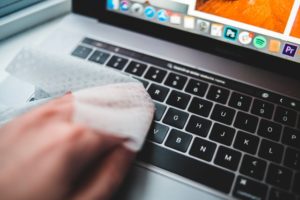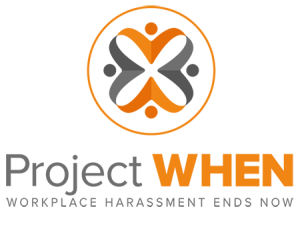Workplace Protocols & Etiquette
Office protocols & etiquette guidelines for modern workplaces
Get your workforce to take ownership of their new office environment by leading them through a facilitated workplace protocols development process.
SCG can lead a facilitated process to guide your organization in developing workplace protocols and etiquette specific to your workplace design and unique culture. Protocols are an important part of any new work environment as they allow for a standard that employees can adhere to, or refer to, for guiding behaviors and resolving conflict in what is usually a dramatically different place and style of work.
 Our approach to workplace etiquette typically includes an on-site facilitated protocol development session, preceded by some pre-work for attendees. During the interactive event, attendees are guided through a brainstorming exercise and work to develop a comprehensive list of behaviors and best practices appropriate for the work environment.
Our approach to workplace etiquette typically includes an on-site facilitated protocol development session, preceded by some pre-work for attendees. During the interactive event, attendees are guided through a brainstorming exercise and work to develop a comprehensive list of behaviors and best practices appropriate for the work environment.
Common courtesy etiquette & work space-specific protocols
The development of protocols is typically broken out into two categories: common courtesy and space-specific. Common courtesy protocols adhere to all employees and include basic guidelines for ensuring an amicable work environment. Space-specific protocols, on the other hand, typically focus on unique challenges or situations that can arise in specific spaces. Often times project teams or executive leadership will prefer to be engaged for the development of this category of protocols first, then as the vision for the new workplace takes hold, our skilled facilitators can guide the conversation towards this stated vision.
COVID-19 workplace protocols: guiding office conduct in light of the coronavirus pandemic
 Employers developing or refining their coronavirus workforce re-entry plan will need to pay close attention to workplace protocols both for the safety and confidence of their employees. Respondents to our State of the Open Office research study indicated increased exposure to germs and a general concern of shared space cleanliness as a major apprehension to embracing a more modern, collaborative work environment. Certainly these concerns are greatly amplified in light of the COVID-19 pandemic.
Employers developing or refining their coronavirus workforce re-entry plan will need to pay close attention to workplace protocols both for the safety and confidence of their employees. Respondents to our State of the Open Office research study indicated increased exposure to germs and a general concern of shared space cleanliness as a major apprehension to embracing a more modern, collaborative work environment. Certainly these concerns are greatly amplified in light of the COVID-19 pandemic.
Access to disinfectant wipes or spray, regular office sanitation, as well as a declared expectation for individuals to sanitize any shared space (conference rooms, collaborative breakout areas, and especially unassigned workstations or cubicles) will all go a long way in building comfort for a return to the office. An edict to clean up after yourself thoroughly is a must-include item for any workplace protocols guidebook.
Remote work, conference call, and video chat etiquette
While telework has been a way of life for some organizations for a while now, COVID-19 ushered in a new era of remote work. Companies haphazardly implemented work-from-home programs en mass, doing the best they could, but for many, it was a build the bicycle as you ride it type implementation.
With no formal training or even a communication piece touching on best practices for remote work or the company’s expectations, many individuals have fallen into bad remote work habits. A remote work guidebook can help employees understand how to more successfully work from home and ensure virtual meetings go smoothly.
We recommend including tips for meeting success, such as stating a person’s name before putting them on the spot. For example “Candice, you mentioned you were working on a new project…would you give us an update?” instead of placing an individual’s name at the end of the sentence. During an in-person meeting, Candice would likely notice you looking at her and pick up on visual cues that are just not possible on the phone or even a video call. Even intent listeners’ minds can drift at times, so having their ears perk up at hearing their name gives their brains time to focus and also keeps meetings running smoother.
Among other items for inclusion should be reminding family members of any scheduled meetings. A half-dressed spouse appearing behind you during a Zoom, Hangout, or Teams meeting is probably not the icebreaker anyone is going for. While being in quarantine has made some home life interruptions more common, many other distractions can be minimized with a bit of advanced planning, something employees will be more inclined to do if they’re reminded of it in a formalized etiquette guide.
Best practices for developing office etiquette guidelines
A workplace protocols development session is typically attended by a representative group of employees who’ll be living in the new space; often these attendees are part of an employee engagement group that meets regularly as the organization prepares for a shift in how work gets done. Upon completion of this engaging event, SCG will compile and organize all of the data, giving your executive sponsor a chance to review the output, upon which we’ll develop a polished electronic document that can be distributed to the overall workforce ahead of the move.
Develop a set of workplace protocols or etiquette for your new office environment
Let’s transform behaviors together and usher in new ways of working. If you’re moving to a new office or overhauling the design of an existing space, contact us through the form below and we can help you develop a set of guidelines for employees to follow when using their new workplace.



